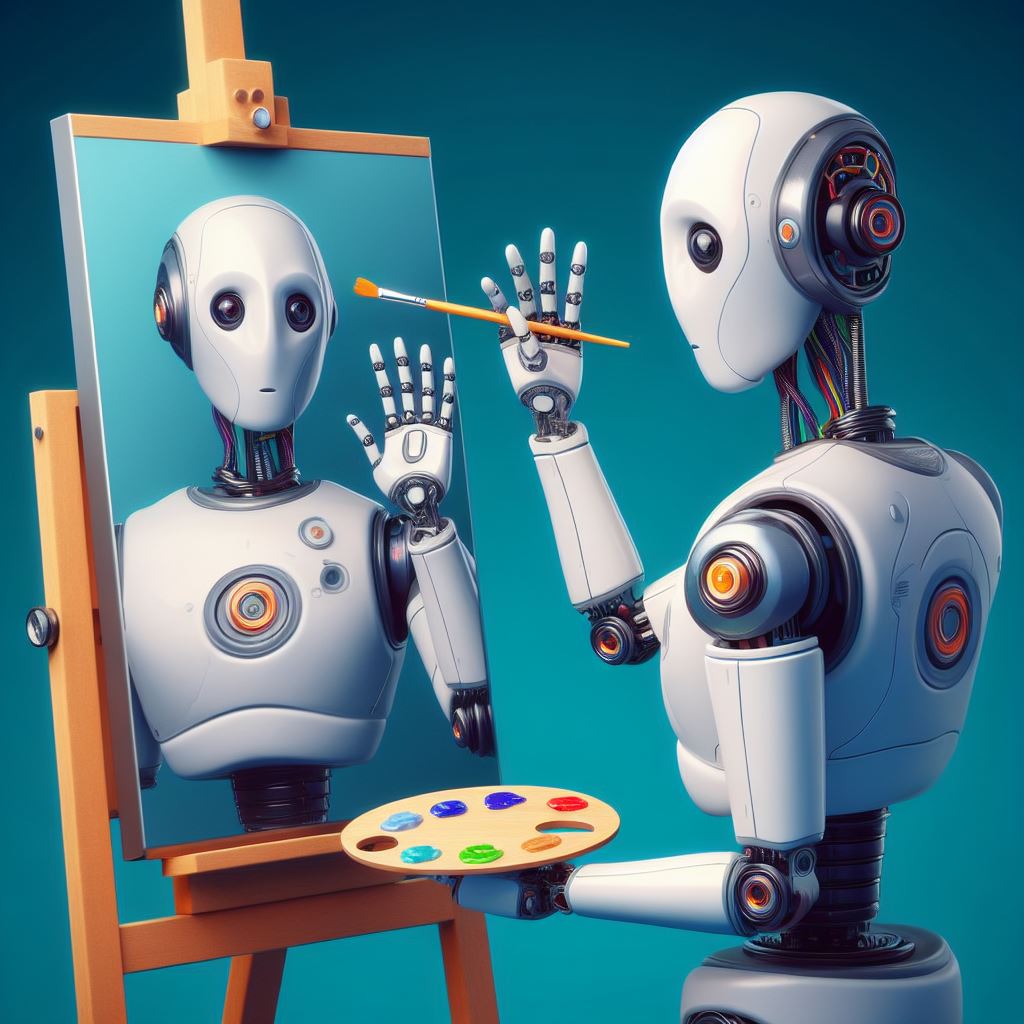Why painting?
One of the first signs of human culture was our ability to express ourselves with images. From ancient cave paintings to abstract art, physically generated images have been a universal way for humans to express and communicate. Beyond simply replicating what is seen, artistically created paintings enable meaning in the way it’s created – what elements are left out, how color is used to heighten emotion, even the thickness or boldness of the application of paint has meaning.
The skills required to effectively paint are intrinsically human – graceful movement, sense of touch and pressure, ability to experience color and value.
For 2016, we focus on the technical side of creating art – the physical transition from raw color to applied color on a canvas. We challenge the participants to create artwork to showcase their robot’s abilities.
Read more about robot art (useful for journalists/press).
Goals
- Foster innovation in AI, image processing, and robotics
- Challenge students to apply skills in creative ways
- Integrate aesthetics and technology
- Encourage participation by the public
Rules
- Team must be affiliated with university or high school. One team per college/school.
- Each team can submit up to six distinct art works in each of the two categories
- Paint/color must be applied with a physical brush by a robotic system. For this first year of the contest, we are flexible of what type of robot is used (arm, swarm, roomba, etc)
- You can use up to 8 different manually premixed colors of your choice during the entire painting process. These colors can be mixed together by the robotic system in an intermediate stage (e.g., on a palette).
- While existing artwork (e.g., Mona Lisa) can be used as a basis of the final submission, a photo of the existing artwork must be uploaded and referenced.
- There is no time limit for creating the painting
We reserve the right to make minor adjustments to these rules at anytime in order to preserve the goals of the contest.
Categories
1. Fully automated execution
This category is for artwork where it’s entire execution from start to finish is done entirely by a robotic system. That is, aside from minor adjustments like pausing the system to refill paint, the system runs autonomously. Any feedback mechanism (e.g., webcam to check desired command execution) must be entirely automated.
As we realize it’s difficult to define artistic creativity, we leave the generation of the painting commands to any combination of human and software artist.
2. Manually generated (semi or full tele-robotic)
This category is for artwork generated using a human-operated robotic system. Generally, there is little or no software used to control the robot. This category also includes any hybrid system where some software automation is used to assist a human painter or a system that uses a human operator to give in-process execution feedback to the system.
Deliverables
Each team can submit up to six artwork in each of the two categories. As the contest this year is entirely online, we require teams to upload their artwork and supporting material. For each artwork, the team must upload:
- photo of final painting
- several photos (or preferably a video) of painting in process
- several photos of team & robotic system
- photo reference of any prior artwork used
- optional short write up on how it was painted (1-3 pages)
- optional (encouraged) video of at least part of the painting process
- optional (encouraged) code repository
- Team information to include: school name, URL to school or department, square logo, team captain name/email/phone number, school contact person name/email/phone number/mailing address, categories (multiple select ok).
Note: Teams agree that their artwork can be used for non-commercial promotion of this contest (e.g., journalistic review). Copyright belongs to the team.
Judging
Winners are based on a combination of public (40%) and professional (60%) judges.
For the public, anyone with a Facebook account can vote on their favorite artwork based on:
- overall originality and aesthetics of artwork (e.g., do you like the painting, impressed with the skill of the “painter”) [100%]
We will have several professional art critics judge the artwork based on:
- overall originality and aesthetics of artwork (e.g., do you like the painting) [25%]
- “painterly” ability (e.g., use of layers, energy/subtleness, blending) [50%]
- technical contribution (e.g., shared source code or algorithms) [25%]
Prizes
1. Software generated
1st – $30,000
2nd – $15,000
3rd – $10,000
4th – $6,000
5th – $4,000
6th through 10th- $2000
Top technical contributor (defined by judges) $5,000
2. Manually (tele-robotic) generated
1st – $10,000
2nd – $4,000
3rd – $3000
4th – $2000
5th – $1000
All prizes are donated to the affiliated school. For non-USA based schools, 25% will given to the school directly and 75% to a US-based charity of your choice.
Schedule
Oct 15th – team registration opens
Nov 1st – teams can start uploading artwork
April 1st – team registration deadline (we just want to have an idea on how many teams are competing for press releases/media)
April 15th – deadline for content upload (we strongly encourage you to upload artwork early to give us time to make sure that you have the needed supporting material such as video or docs. Remember, you need at least a video of the robot in action. A partial or sped-up video is fine.)
April 18th to May 10th– open to public voting & professional judges
May 15th – winners announces
